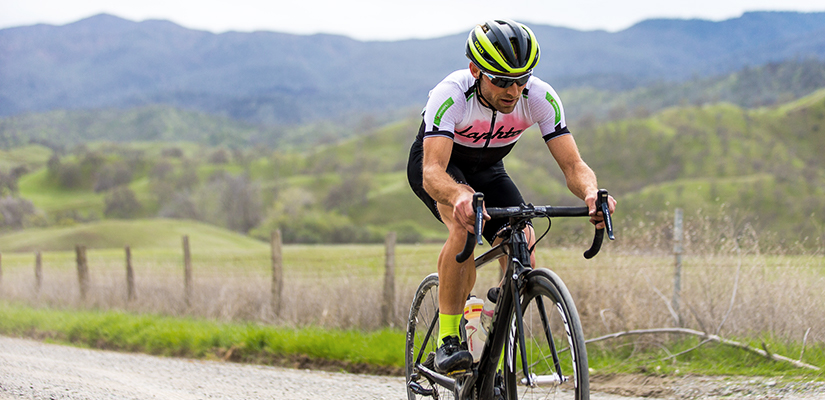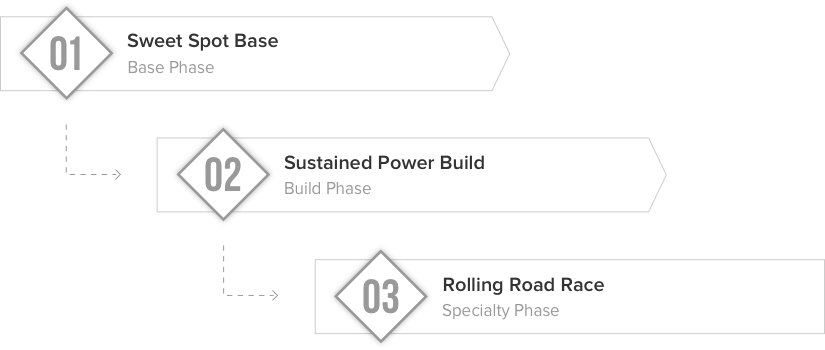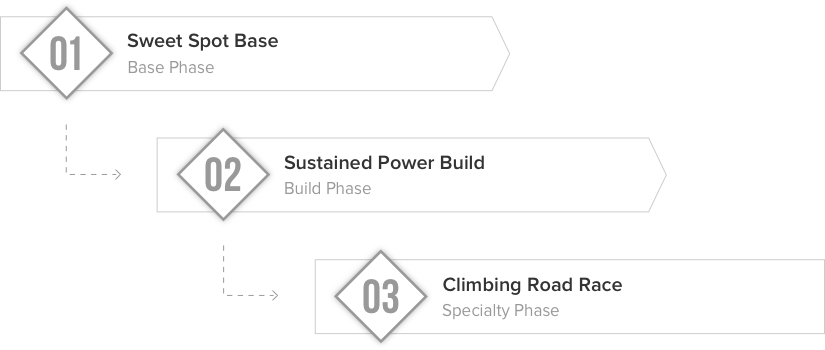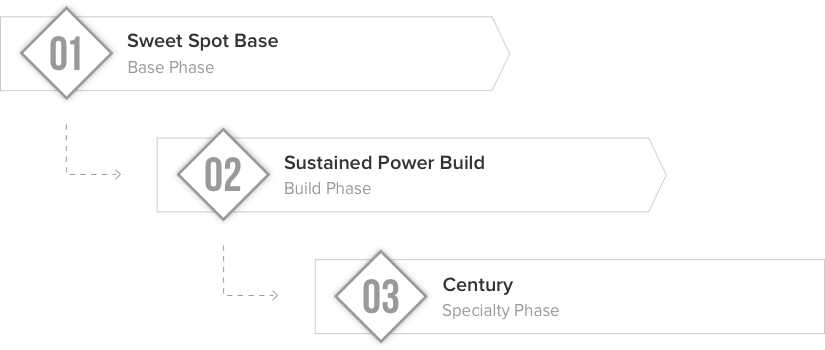How to Train for a Gran Fondo or Sportive — Advice from Ex-Pro Neil Shirley

There are some races you can go into with confidence without a lot of prior training — a 100-200 mile bike race is not one of them. These one-day epics take a lot of preparation. And we’re not just talking about getting your body in good physical shape either. There’s equipment, your bike set up and the all-important nutrition plan you have to figure out as well.
To help break down what’s required of an athlete who’s getting ready for a big gran fondo or similar ride, our PR Director and host of the Ask a Cycling Coach podcast, Jonathan Lee, interviewed ex-pro cyclist, famed epic ride smasher and current Editor in Chief at Road Bike Action, Neil Shirley. The interview went down at Sea Otter Classic this past month. Listen to the full one-on-one discussion below and take a look at some of the best advice Shirley had to share below!
Neil Shirley Knows Cycling
First off, we have to explain why Neil Shirley knows what he’s talking about. Shirley, who’s 37 years old now, started out mountain biking and by the time he turned 19 he was a pro. After a few years racing MTB, he transitioned over to a domestic pro career on the road. During this time, he became well known for his versatile bike-handling skills thanks to his MTB background. After racing as a Pro Continental rider for 7 years, he retired and moved over to Road Bike Action Magazine.
Shirley has a fun job. Since joining the Road Bike Action team, he hasn’t stopped riding. In fact, riding is often a requirement of the job. Neil signs up for uniquely appealing or adventurous rides and writes stories about his experiences at these races. A couple ultra-endurance rides he’s famous for are the Dirty Kanza 200 and Gravel Worlds, which, by the way, he won.
Now that racing isn’t Shirley’s career anymore, his approach to choosing his events is a bit different now. To get excited about an event, it has to be a little over the top and something very challenging. If it doesn’t hit the mark on either of those two aspects, count Shirley as uninterested. To really want to pour himself into the required training and make those sacrifices, the race has to excite him.
Training for an Ultra-Endurance Race
Once you’ve found a race that excites you, the next step is finding a training plan that works with your schedule. Shirley notes, “The reality is, like most of us, it’s work and family that dictates your schedule — I try and be creative on how I can log hours on the bike.”
Because the ex-pro maintains a high level of fitness all year his training period is shorter than most. About 6-8 weeks out from a key event Shirley starts fine-tuning and focusing more on his training. If you’re a non-Shirley-type and you’ve been off the bike for more than two months, don’t sweat it. Just give yourself a bit more time to train. Here are the TrainerRoad training plans we suggest to athletes preparing for an ultra long-distance race.
Choose one of the three training tracks below based on the composition of your race. The elevation profile will make your decision. Your Base and Build training phases remain the same — complete Sweet Spot Base (or Traditional Base if you have more time) and then Sustained Power Build — but your Speciality training plan will depend largely on the course your racing. The plan names are fairly self explanatory, but here’s a bit more information just for good measure.
If your race includes frequent, shorter climbs — in other words it has lots of rolling hills — then complete your training with the Rolling Road Race plan.
If your race includes climbs that are more sustained in nature, then complete your training with the Climbing Road Race plan.
Finally, if your long-distance race does not have any hills, complete your training with the Century plan.
There’s a big misunderstanding with tapering. Once you’re in your last couple weeks of Specialty training a lot of cyclists think that they can back off the intensity. Shirley notes there’s nothing worse than going into your event with the feeling of heavy legs. You want to feel race ready.
To achieve that Shirley notes he makes sure to have a couple of days of intensity leading into the event just so he has that “race feel” and his legs aren’t lethargic. Keep in mind: If you use a TrainerRoad training plan and schedule it so you complete your Specialty Phase of training plan just before your event, specific tapering workouts are included.
Common Mistakes to Avoid
Equally, if not more important than the fitness aspect of things for these longer rides is having a solid nutrition plan for your race, understanding pacing and getting your bike set up properly. Here is a rapid-fire list of the most common mistakes you should avoid:
1. Not Having a Nutrition Plan
There are a huge portion of people who come into these long-ride events without a nutrition plan — they just rely on whatever’s at the aid stations. Big mistake. You can get away with that for 5-hour-long rides, but when you’re riding for 8, 10, 12 or even 16 hours, like in the Dirty Kanza, that’s a really long time to not have a nutrition plan in place. Something that’s appetizing at hour five is not going to be appetizing at hour 12. You have to go through that process and figure that out — this process really starts months in advance to figure out what works for you.
There are some people who have iron guts and can down a meat lovers pizza on the bike. Then there are others, like Shirley, who have more sensitive stomachs. His solution is keeping all his nutrition on the bike liquid only. This has worked really well for him in the past. Two years ago when he did Dirty Kanza his drink of choice was First Endurance EFS. He mixed each bottle quite heavy calorie-wise based off of the day’s heat conditions. His morning bottles when it was cool were 240 calories, while his bottles later in the day were closer to 260 calories.
2. Carb Loading for the Sake of Carb Loading
Carb loading is kind of a tired concept. If you are going to subscribe to it, you have to be intelligent. For Shirley, he already knows what works for him the night before a long race: thai food with coconut milk and curry. He claims it’s his personal rocket fuel!
3. Letting Your Excitement and Ego Mess with Your Pacing
On longer races especially, pacing is number one. In the excitement of a race this is easily forgotten. Shirley warns, “Everyone is excited and feels great at the start … people forget it’s a very long day and you’re not going to be feeling great by the end of it.”
Excitement is one thing, ego is the another. So many riders want to prove how strong they are and end up burning themselves out too early on in the race. Remember: these longer rides are a race of attrition. You can’t let someone’s hard pulls affect your game plan. The biggest thing you have to learn is patience. You’re going to have plenty of opportunities to show how strong you are. As Shirley puts it bluntly, “I’d much rather be strong in the last 20 miles than really showing anything the first 20 miles.”
4. Not Allowing Your Course Recon to Inform Your Equipment Decisions
With long gravel rides specifically, like Gravel Worlds, your tires and tire pressure all make a huge difference. If you don’t get those details dialed you’re going to have a really tough day. You will have to make different decisions depending on the distance and terrain of your event. For something like the Dirty Kanza, that’s an event where you’re going to want a really high-volume tire. You’ll see a lot of riders with 40 mm tires — that’s massive! But they want the added comfort and protection an extra voluminous tire provides for that 200-mile distance.
Tire pressure is another thing. A lot of people think that if they run higher pressure it’ll save them watts, which will thus help them shave their finish time. The trouble is, you’re more prone to crashing because every bump you hit is going through you. There’s nothing more damaging to your time than a crash. Plus, your kidneys are going to hate you. Shirley’s take on tire pressure with high-volume tires is this: don’t be afraid to run it low. His go-to PSI is 40 — he never goes over that. So for a 35 millimeter tire, he’s usually right at 40 PSI, but for a 40 millimeter tire, he’ll more likely to go down to 35 PSI.
5. Over or Under Packing Tools
There are some people at these long-day epic events that bring a whole trailer of stuff — Shirley’s not into that. He carries just what he needs. That includes: a good multi tool with a chain tool, a large tire boot, multiple inner tubes, a quick link, 1-2 CO2s for quick flats and a mini pump just in case he goes through all his CO2s. All these items cover most of your bases and can fit nicely in most seat packs available.
Listen to Neil Shirley’s One-On-One Interview
Additional Notes
TrainerRoad’s Ask a Cycling Coach podcast is dedicated to making you a faster cyclist. It gives you the chance to get answers to your cycling and triathlon training questions from USAC certified coaches Chad Timmerman, Jonathan Lee and special guests. Learn more about other topics we covered in the latest episode with our resources below:
If you have a question that you’d like to ask Coach Chad, submit your question here. We’ll do our best to answer them on the next episode of the Ask a Cycling Coach podcast.


